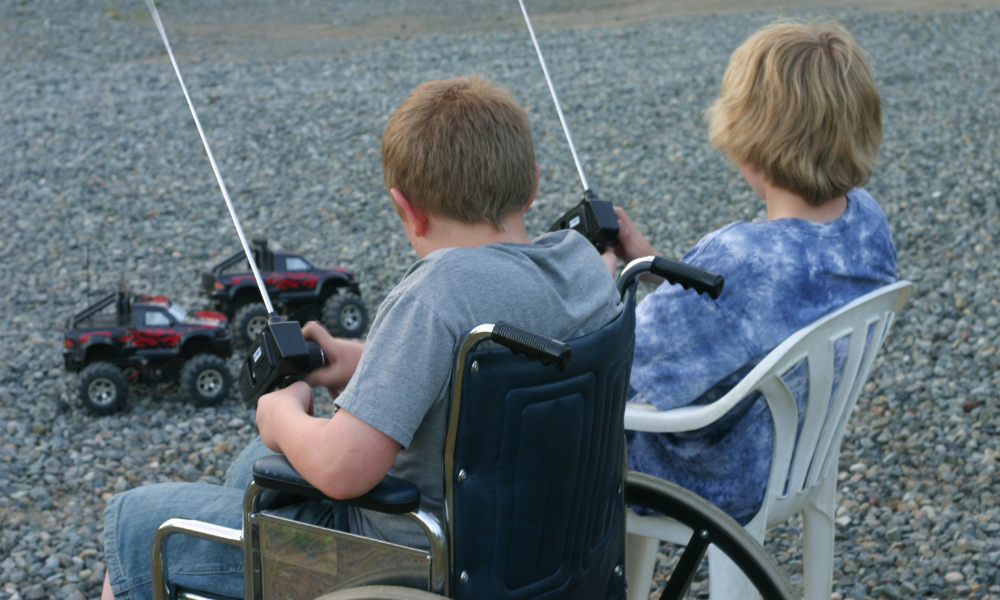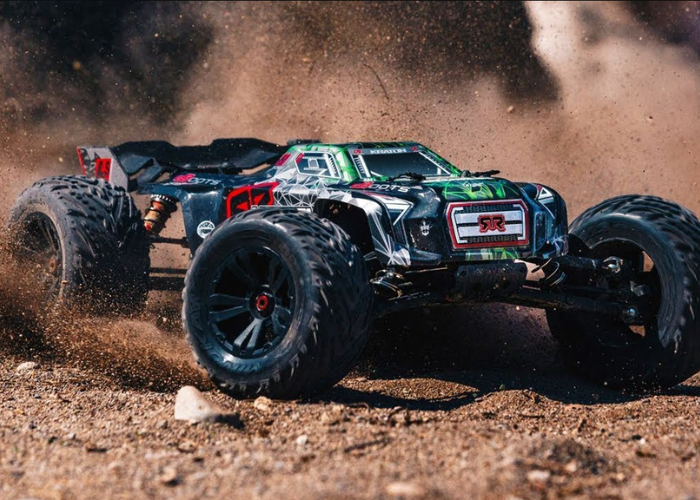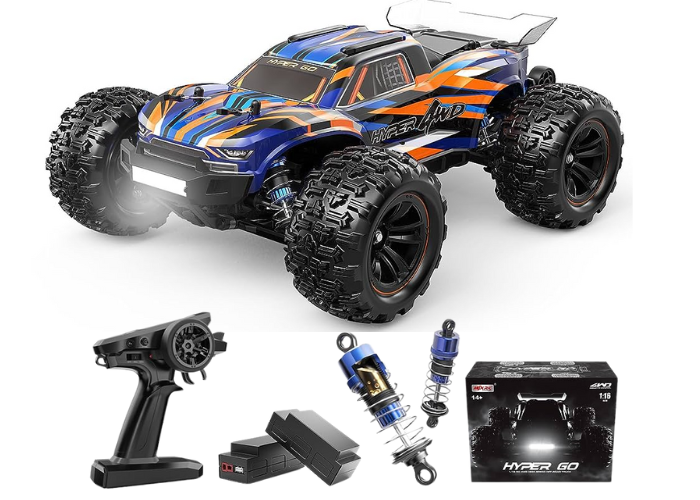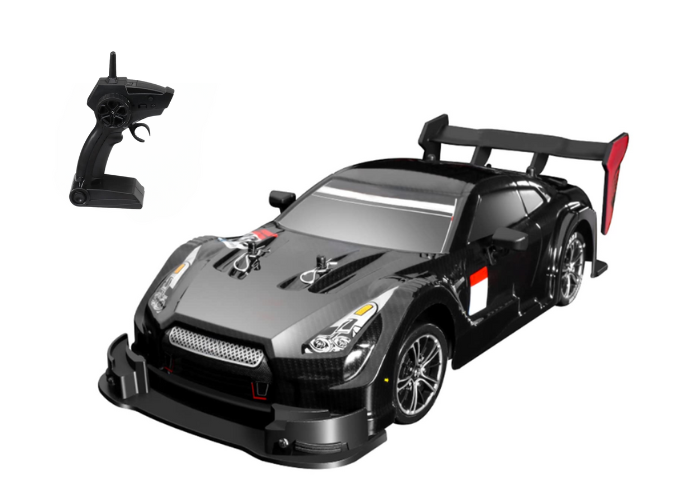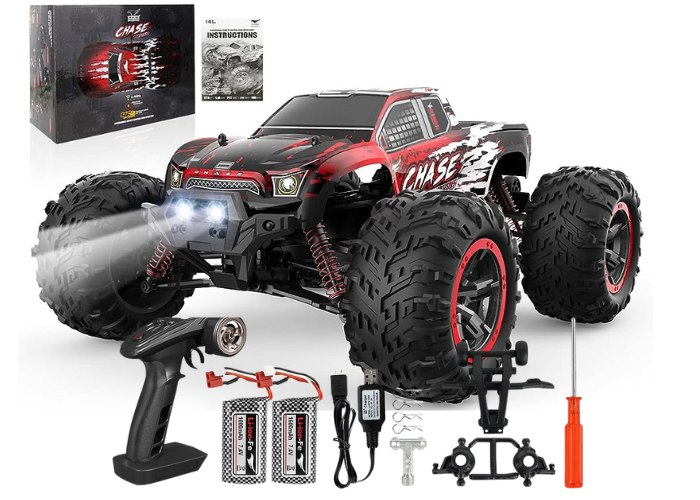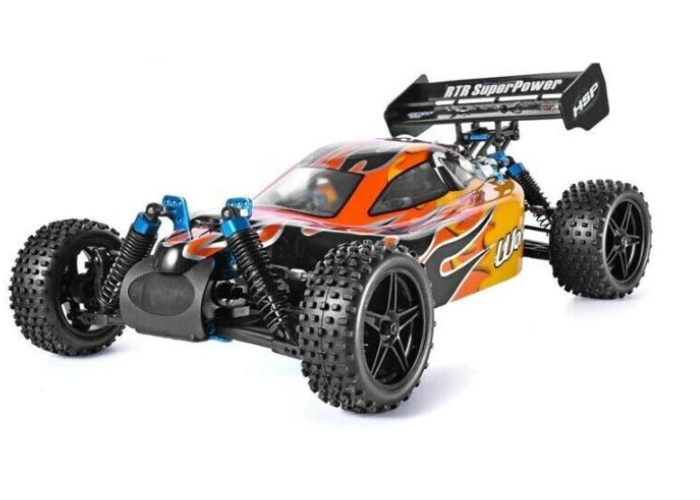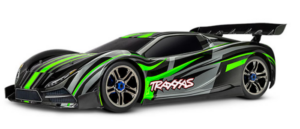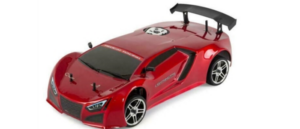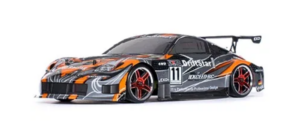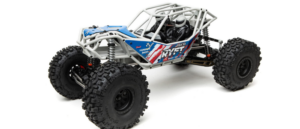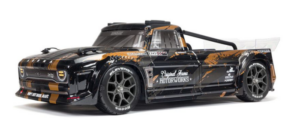Have you always wanted to get stuck into the exhilarating thrill that is the world of remote control (RC) cars? Look no further!
Whether you are just dipping your toe into the hobby or you’re looking to enter competitions further down the line, this beginner’s guide will help you take that very first step.
We’re going to walk you through the different types of RC cars, the fundamental components and features, explore the different styles, provide essential maintenance tips and offer guidance on selecting the best RC vehicle for your needs.
So buckle up, and let’s get started!
Why Do We Love RC Cars?
First things first, why are RC vehicles so popular?
RC cars aren’t just for kids, and the hobby is so much more than just racing your cars around the living room. In fact, it’s a serious hobby with high-stakes competitions.
The best thing about RC cars is that you can be as involved as you like. While some just want to race around the neighborhood, others love building cars from scratch and getting stuck into the mechanics of these awesome vehicles.
It’s also very nostalgic. Spending a few hours with your RC car is a great way to feel like a kid again and take some time out from the stresses of adult life!
Where to Begin – The Different Types of RC Vehicle
The first step you’ll need to take is choosing an RC vehicle. This isn’t as easy as it sounds, as you have a huge amount of choice when it comes to type of vehicle, brand and budget.
You’ll first have to think about whether you want a car, truck or a buggy, and then consider the size and special features you are interested in.
On-Road RC Cars
Designed for racing, on-road RC cars can reach much higher speeds than trucks or buggies. They usually have a sleek and low profile design to reduce drag, as well as smooth tyres that allow them to get to incredibly high speeds on smooth, flat surfaces.
Off-Road RC Cars
These have been built to handle tougher terrain than on-road cars. They are best for use on dirt, gravel or grass, and have durable tyres with deeper treads. They have good suspension and a high ground clearance which allows them to tackle bumps and uneven surfaces without damage.
RC Drift Cars
Ultra-smooth turns at speed can only really be done with an RC drift car. These are designed for precision handling and have tyres that allow the car to slide sideways whilst the wheels continue to spin. They are usually rear-wheel drive, the same as real drifting cars.
RC Trucks
For off-road thrills, an RC truck is for you. These are designed to handle the toughest of terrains, from steep mountain paths to sand tracks. Monster trucks and stadium trucks are the two most popular types. Stadium trucks are designed for indoor racing and are usually 2WD.
RC Buggies
If you can’t decide between a car and truck, an RC buggy offers a happy medium. These are off-road vehicles, but they also do well on smooth, flat surfaces. They are generally used for racing and while they may not reach the top speeds of an RC car, can still be pretty nifty!
Understanding the Sizing of RC Cars
For those new to RC vehicles, the sizing can be a little confusing. RC vehicles are sized as a proportion of a real vehicle. The most common size for instance, 1/10th, meaning that the RC is 1/10th of its full size counterpart.
Sizes can range from 1/5th (pretty large!) to mini RCs which could be as small as 1/64th.
Ready to Run or Build it Yourself?
RC vehicles can arrive either ready to run, or they require building.
If you’re wanting to get racing straight away, opt for a ready to run vehicle. These arrive fully assembled and usually only require the battery to be inserted. Some vehicles are ‘almost’ ready to run, which means there’s just a couple of things needing doing.
DIY vehicles will require full assembly. This will allow you to get stuck into the mechanics of RCs, and are great for those who are interested in more than just racing.
The majority of parts will come included, but this process can still be tricky! The experience will allow you to understand and fix a lot of issues that occur, as you’ll have gotten to grips with the mechanics of your RC.
It’s worth noting that building your RC vehicle from scratch is unlikely to be a quick process, so it’s important that you enjoy this kind of work. However, once completed, knowing you’ve put it together yourself will lead to immense satisfaction!
Key Features
In this section we’ll have a look at some of the features to look out for, as well as some of the decisions you’ll need to make when it comes to the engine, motor and method of driving.
Electric vs Gas Powered
Arguably the most important decision to make is whether to opt for an electric or gas powered RC vehicle.
Electric models tend to be better for beginners. They are more affordable, easier to maintain and quieter to run. As a result, they’re less likely to disturb other family members!
Electric RCs may not reach quite the same speeds as fuel powered RC vehicles, but they do tend to have better acceleration. This is because the power gets sent to the wheels faster.
Electric cars also arrive ready to go. There’s no need to purchase nor add fuel, you’ll likely just need to charge the battery and away you go!
Gas powered RC cars are usually powered by Nitro fuel, which is very affordable. Gas powered cars are fast and powerful, but they can also be very noisy. They tend to be heavier and require a lot more maintenance, but there’s nothing like having that much speed at your fingertips!
Gas powered cars will need ‘breaking in’ before they can be properly used. This means you’ll need to drive at slow speeds to begin with, so they’re not ready to go in the same way as electric models are. You’ll also need to purchase fuel and oil.
RCs powered by fuel are likely to be more expensive, but this is not always the case.
Brushed vs Brushless Motor
You’ve got two choices when it comes to the motor, brushed or brushless.
Brushed motors operate by using ‘brushes’ to convert electricity into motion. They are better for beginners as they tend to be less powerful, and they are more affordable than brushless motors.
Brushless motors are for those with a need for speed! They allow the vehicle to travel faster and with more power. You’ll likely see greater acceleration.
They do tend to be more expensive than brushed motors, but they are noticeably more difficult to drive. This is due to the power, and beginners may want to consider a brushed motor instead.
2-wheel-drive vs 4-wheel-drive
You’ll also need to choose between a 2WD and 4WD vehicle.
2WD RCs are easier to build and maintain, plus they are normally more affordable.
They are slightly harder to drive, and don’t do as well on varied terrains. RC trucks are more likely to be 4WD, as they need to be able to tackle a range of terrains.
4WD models are easier to drive but more aggressive. They offer much better grip across tough terrains, and pack more of a punch when it comes to adrenaline!
Battery Options
Batteries are either LiPo or Ni-Mh. LiPo batteries are more expensive, but they use the latest technology which makes them longer lasting and more powerful.
Ni-Mh batteries are easier to use but less durable. They need to be fully drained before charging, and fully charged before storage. They are cheaper and, although less powerful, better for beginners.
The batteries used in RC vehicles aren’t your standard disposable AA batteries. Therefore it’s essential that you know how to properly care for them, store them and eventually dispose of them. Make sure you read the user manual thoroughly to ensure you get the most from your battery.
Radio Controls
It is the transmitter and receiver that gives you control over your RC vehicle. Basic controllers usually have two channels, one for steering and one for braking and accelerating.
More advanced RCs can have multiple functions, allowing you more adjustability. If you’re just getting started with an RC car, you really only need basic controls.
Selecting the Right RC Car Brand For You
You are truly spoiled for choice when it comes to RC vehicles, but there are some brands that stand above the rest in terms of quality and value for money.
There’s also a huge range of retailers and stockists, where you can compare brands, prices and models. Check out the 15 best places to buy RC vehicles here.
Traxxas
Based out of Texas, Traxxas specialize in ready to race nitro and electric RC vehicles. They are great for beginners, but they also produce a number of fast and innovative new vehicles that are ideal for experienced users.
Redcat Racing
The place to go for off-roading, Redcat Racing produces the best crawlers, trucks and buggies. They have a wide range of vehicles available to purchase, as well as spare parts, accessories and even apparel.
Exceed
For budget RCs, have a look at Exceed. The vehicles aren’t the best quality compared to Traxxas, but they are a lot more affordable.
If you haven’t fully invested yourself in the world of RC vehicles just yet, this is a good place to start. While the RCs aren’t quite as good quality, they are less of an investment.
Tamiya
Tamiya are world-famous thanks to their reliability and versatility. The quality tends to be very good, and they have models to suit both experienced and beginners RC hobbyists.
Axial
Axial is another good choice. Not only can you browse and shop their huge range of RC vehicles on their site, you’ll also be able to access a wealth of information related to the hobby itself. This includes events and information about your new car that’ll help you make the most of it.
ARRMA
ARRMA vehicles are designed for racing. They have a wide range of RCs suited to beginners and experienced users, but they are best known for their high speeds. In fact, of the top 10 fastest RC cars in the world, ARRAM vehicles make up 6 of them!
Getting Stuck In
For those who want more from the hobby than a whiz round the back garden every once in a while, you’ve got plenty of opportunities.
All over the UK and USA there are opportunities to race your RC. This will help you to unleash your competitive spirit (by showing others that your RC is the best!) and meet others involved in the hobby.
Races are held all year round and often there’s cash and prizes from sponsors up for grabs.
Another option is RC shows. These allow you to show off your RC and interact with other enthusiasts. These are especially rewarding if you have built your RC from scratch, or spent a lot time painting it.
What About Bashing?
If neither racing nor showing appeal, you could try bashing. This is, quite simply, driving your RC at full speeds, testing its limits and seeing what your car can do.
Bashing isn’t destructive, as the name suggests. Instead, it’s simply about having fun in an environment where there aren’t any rules or regulations. You could head to the beach, park, a skate park or construction site.
There aren’t any rules, but you should take care not to damage your car. Only try out ‘bashing’ when you have experience driving your car and can confidently control it. While this type of driving can be a lot of fun, it can also cause damage to your vehicle if you let things escalate!
Maintaining your RC Vehicle
Vehicle maintenance is something you’ll have to consider when shopping for an RC.
It’s important to keep your RC clean. This will allow you to spot any problems early on, and also prevent damage that can be caused by dirt or grit getting into some of the parts.
Use a natural bristle brush to remove dust and dirt, removing marks with a motor spray.
How to Care for your RC Car
To prolong the lifespan of your RC vehicle, you should follow a few basic principles. Remember that RC vehicles do break, but most issues are fixable.
You should ensure you choose an RC suitable for the terrain you plan to run it on. If you are planning on running it in your backyard or in the woods, you’ll want an off-road RC. if you’re interested in racing on smooth terrains, opt for an on-road vehicle.
Before you run your RC, you should check it carefully for any signs of damage. Check the batteries are in good condition and that there isn’t any visible damage or loose screws.
You should both check and clean your tyres regularly too. Wash the tyres using warm water and a toothbrush if they are dirty, and inspect the tyres for any damage.
Remember, you should choose an RC vehicle based on your ability. Petrol powered models that can reach the top speeds have a huge amount of power, and it can take a while to master the art of driving them! There is no point spending a lot of money on an RC, only to crash it into a wall 5 minutes after taking it out of the box. If you’re new to the hobby, start small, mastering basic control before trying anything too advanced.

